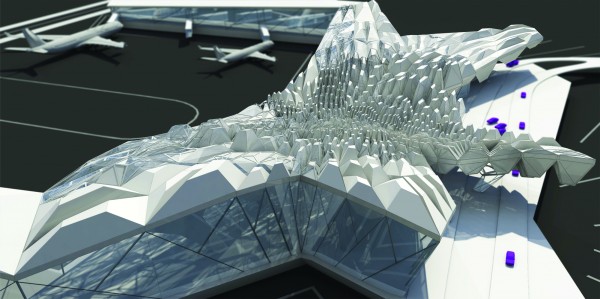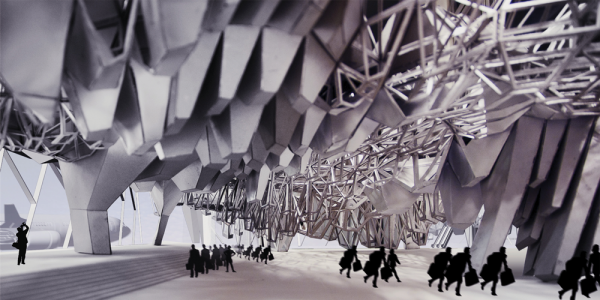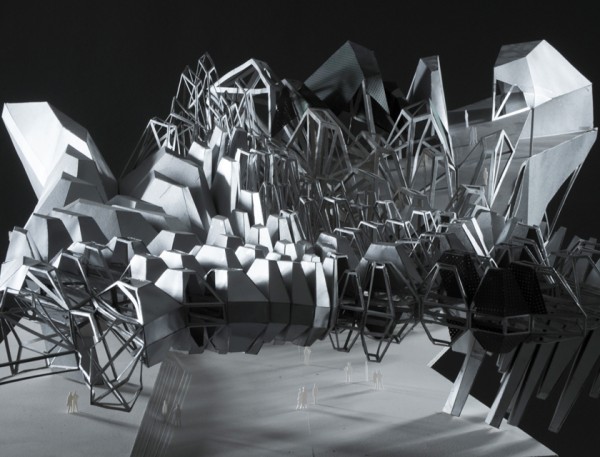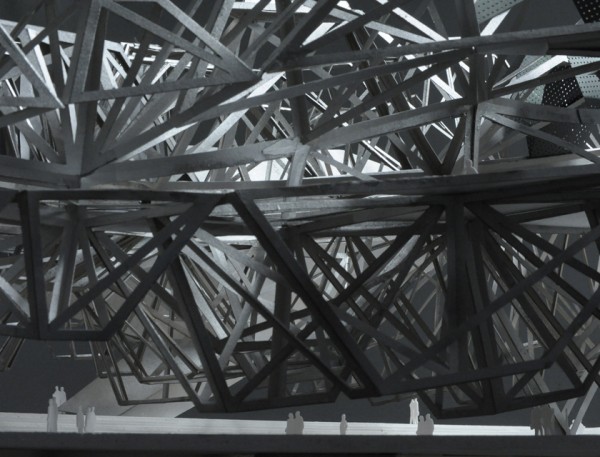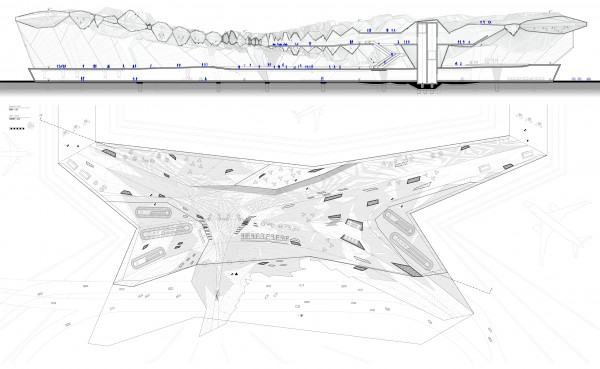Stefan Ritter designed a proposal for an extension to the Riga International Airport in Latvia. The project’s architectural effects are based on three distinct surface qualities (clad solids, screened semi solids, and exposed trusses) which are composed over a geometric system with a strong tectonic expression. The consequence is a tension of simultaneous perception of surface figures juxtaposed with geometric volumes. The architecture becomes an esthetical experience of oscillating volumetric readings throughout the spaces of the building.
The terminal is an extension of Riga international airport for airBaltic. The architecture is concentrated on the roof – creating an artificial sky that modulates the spaces of the main hall through its undulations. The geometry condenses at the slowest point of circulation (security check) and expands towards the two gate arms, thus amplifying the circulation flows and simultaneously orientating passengers in the building. The main hall is subdivided into zones of land-side and air-side circulation by the cladding patterns of the roof and broken into rooms by “fake columns” that replace walls – they come down from the ceiling but don’t or just barely touch the ground. The roof includes spaces for longer waiting periods for transfer passengers, with an atmosphere of a semi underwater camera – looking down into the terminal hall, through the structure, and up over the roof scape out to the airplanes taking off and landing.
via suckerPUNCH

